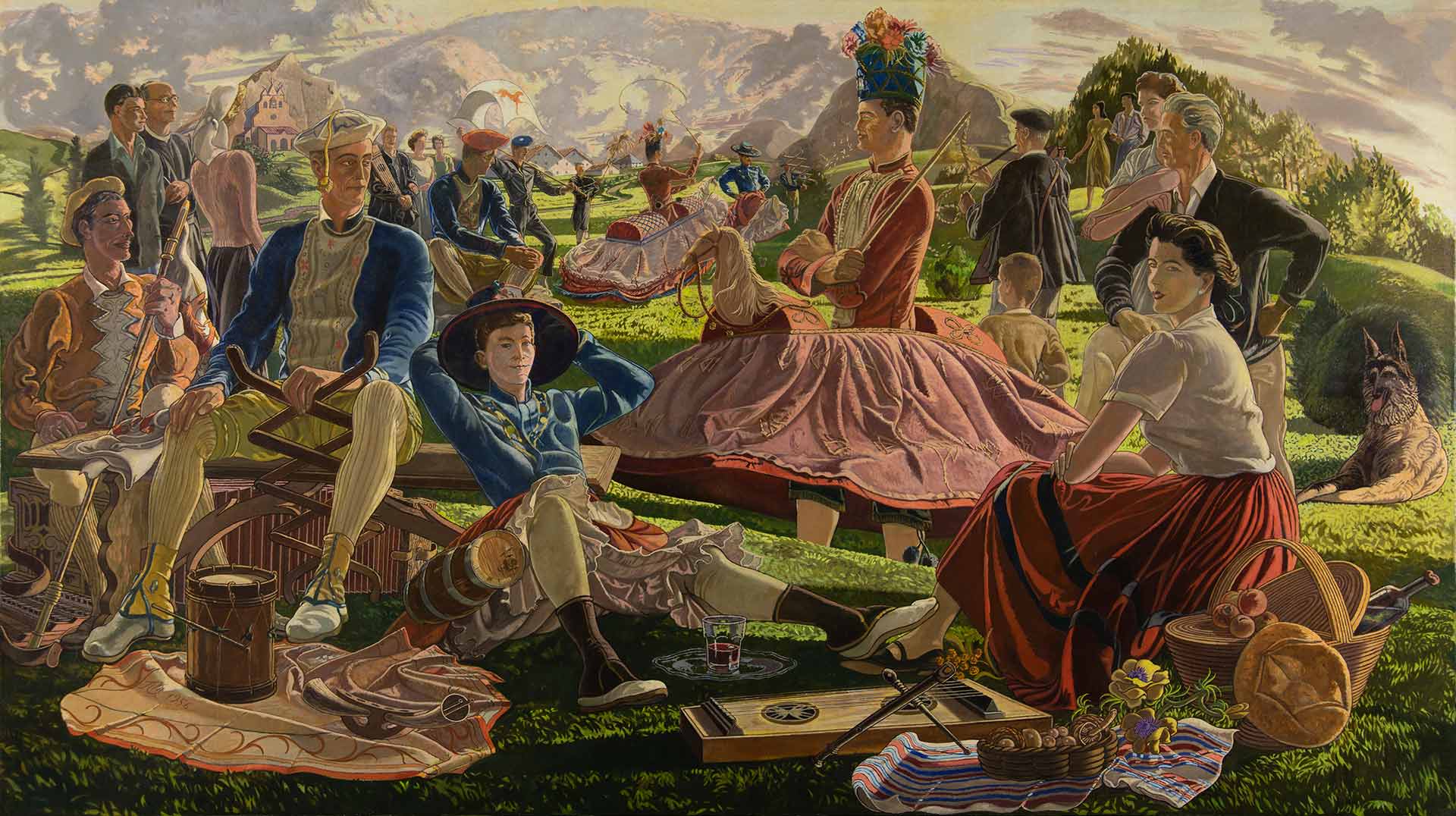DANCE IN PAINTING
This exhibition space presents a more ethnographic vision of our past, between the psychological perspective and the symbolism of dance. Merrymaking Bilbao makes its appearance, where the txistulari (traditional flutist), the eternal City Council official, embodies the very sound of protocol, as opposed to the life of dance that takes place in the anteiglesias (village districts), either in Arteta’s Pilgrimage or in Olasagasti's autumn apple harvest and sagardantza (apple dance); from José Arrue's painting—in a Brueghel-like style, which reflects the everyday sociology of the anteiglesias, in whose background the towns of Bermeo or Arrancudiaga are outlined—to Ucelay’s Souletin Dances, in which a gentrification of the villagers occurs, "the liberation of ethnography" (in the words of poet Ramón de Basterra). Ucelay is, essentially, a portraitist who ennobles everything, be it in the port of Bermeo or at the festivals of Zuberoa. Here all objects, musical or not, as well as the wine glass (typical of the Godalet-dantza [wine-glass dance]) have their pedigree book, their nobility, their aesthetic aura. Ucelay poeticizes the natural beauty of people and their belongings, and along with it, their everyday life: he does not document or narrate an ethnographic fact, but rather sublimates it, with his oriental detail and personal calligraphy, turning a popular festivity into a huge display of visual culture.

